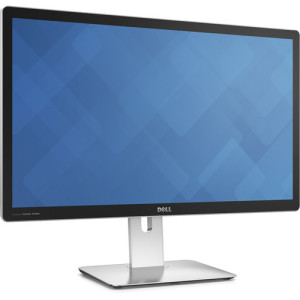Using a 4K or 5K display with your Mac
It’s become fairly normal for video professionals to work with 4K sources. Heck, even the new iPhone 6s can shoot 4K video. However, it’s still pretty uncommon to have a 4K display, especially connected to your Mac as an actual computer display. Even worse, there are confusing compatibilty issues that mean a lot of folks either have problems, or end up running their displays with less-than-ideal settings. We’d like to help break down the options a bit.
In this post, we won’t be recommending specific displays. Take a look at the Wirecutter’s roundup for thoughts on that.
Unraveling the Terminology
First, we need to clear up a few bits of terminology. In this post, we’ll refer to computers that can drive 3840x2160 displays as “UltraHD” and computers that can do 4096x216 as 4K. We’ll also be talking about “5K” which is 5120x2880. These are often called retina displays.
When you’re connecting one of these displays to a Mac, you’ll generally be running them in some sort of “Retina” mode - this means the monitor has (for example) 1920x1080 “points” of resolution, and each point is backed by 4 pixels. This is what you find on all of the iPhones and most iPads, and it dramatically increases the clarity and crispness of the display. However, when you’re viewing a video file on one of these displays, it will be played at a 1:1 ratio. So, an HD video being played at “actual size” on a 4K monitor will take up exactly 1/4 of the screen.
There are also two ways to connect a high resolution display to your Mac - HDMI and Thunderbolt (or “display port”). 5K displays require two Thunderbolt connections, all the other displays use a single cable.
There are two possible technologies that can be used over a thunderbolt cable - Single-Stream and Multi-Stream. We’ll skip the low level technical specifics here, but there’s an important item to note here. As you’ll see later in this article, some Macs only support the highest quality modes when running in MST mode, but many monitors don’t default to that mode. We’ve been in a few offices that have 4K monitors connected, but they’re running at very low framerates because they haven’t had MST enabled. This is typically found in the monitor’s menu.
Low Refresh Caveat
The last big technical distinction comes from refresh rates. Some Macs can only drive a 4K monitor at 24hz or 30hz. While these are OK for watching movies, if you try to use them as external computer monitors, you’ll probably notice that everything seems very choppy, or stutters. Scrolling won’t be as smooth, and it just won’t “feel” right. And, if you’re working with 60p content, you’ll be missing a lot of your video frames.
In general, if your Mac can only drive a display at 24hz or 30hz, we wouldn’t recommend trying to use one of those displays day-to-day. As of this writing, Macs will always be limited to low refresh rates when connecting to a monitor via HDMI. If your 4K display supports both HDMI and Display Port (Thunderbolt), make sure you use display port.
Below is a chart of all the Macs that support at least some form of 4K monitor. As models are updated, you can expect to see more and more suport. However, because 5K is currently only possible with dual cables, don’t expect that option to appear on the smaller Mac products (like the Macbook Air or Macbook One) anytime soon. As new standards are adopted, that should change.
Worth the Trouble
Finally, one thought. It seems like a lot of trouble, and a lot of hoops to jump through, but it’s worth it. We use 4K displays routinely in the Divergent Media offices, and truly appreciate the clarity that they offer, even when doing (as we often do) text-heavy work.
| Mac | UltraHD 30hz | UltraHD 60hz | 4K 24hz | 4K 60hz | 5K 60hz |
|---|---|---|---|---|---|
| Macbook (12", 2015) | X | X | |||
| iMac (27in, Retina) | X | X | X | X | X |
| Mac Pro (Late 2013) | X | X | X | X | X |
| Macbook Pro (13in, Retina, early 2015) | X | X | |||
| Macbook Pro (15in, Retina, Mid 2015) | X | X | X | X | X1 |
| Macbook Pro (15in, Retina, Mid 2014) | X | X | X | ||
| Macbook Pro (15in, Retina, Late 2013) | X | X2 | X | ||
| Macbook Air (Early 2015) | X | X |
1Only with the AMD Radeon R9 M370X
2Only with dual stream (MST) displays
